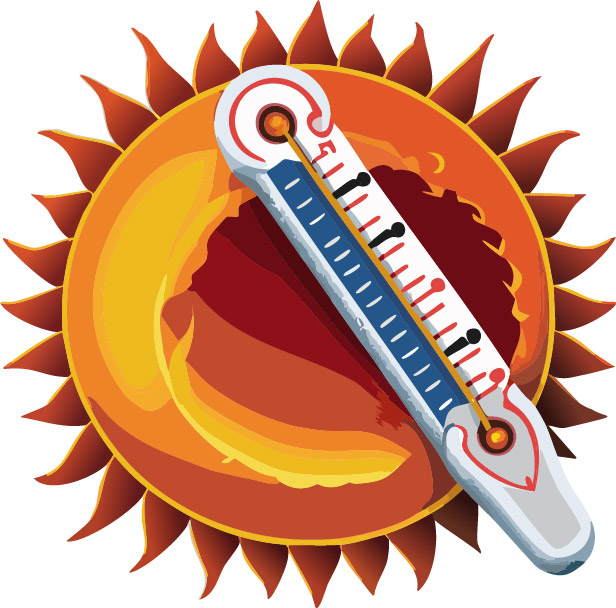Which study skills strategies can improve students’ academic performance?
Page 4: Mnemonics
For many students with learning disabilities, retaining and recalling information is often a difficult task. As research has demonstrated, one of the best ways to help students to overcome this challenge is by teaching them mnemonic strategies, sometimes referred to as memory-enhancing strategies. Mnemonic strategies are those in which visual or auditory clues are used to help students make connections between their own prior knowledge and new information.
Research Shows
- Two research syntheses of mnemonic strategy instruction indicate that these strategies are highly effective with students with LD. The syntheses also revealed that mnemonic strategies are effective across grade levels, disability categories, content areas (i.e., vocabulary, science, social studies), and learning settings (e.g., laboratory, classroom).
(Wolgemuth, Cobb, & Alwell, 2008; Scruggs and Mastropieri, 2000) - Over the last thirty years, more than forty research studies have documented the effectiveness of mnemonic strategy instruction. These strategies have been shown to be effective for elementary and secondary students with mild disabilities (e.g., LD, intellectual disability, emotional disturbance).
(Scruggs, Mastropieri, Berkeley, & Marshak, 2010) - A meta-analysis of intervention research shows that mnemonics are an effective strategy for learning and remembering social studies content.
(Ciullo et al., 2020)
Robert Reid discusses the benefits of mnemonics and offers suggestions for teachers who want to introduce this strategy (time: 1:27).

Robert Reid, PhD
Professor Emeritus
University of Nebraska-Lincoln
Transcript: Robert Reid, PhD
Mnemonics are strategies that have been used for over 3,000 years. The ancient Greeks actually developed mnemonic techniques to help them with their oratory. The benefits of using mnemonics are very clear. Mnemonics help students recall information better than other methods. In fact, there can be a two- or three-to-one difference in the amount of information students recall when using mnemonics as opposed to traditional methods. The advantages of mnemonics are two-fold. First, they help students encode information in long-term memory. And, second, and which is even more important, mnemonics help students retrieve information from long-term memory. Mnemonics serve almost like a fishing line. A fishing line is hooked to the fish, and through the mnemonic we can retrieve that fish, which is the information that we need to recall. When teachers think about using mnemonics, they’re often overwhelmed by the amount of information. Teachers should think about using mnemonics very judiciously, for the most important concepts and the most important information. Then, after they’ve developed a set of mnemonics, they can move on and add new mnemonics.
Three basic types of mnemonic strategies, listed below, can help students remember information in different ways. When they select a mnemonic strategy to help students learn and recall information, teachers should take into consideration which type is most effective for the student and appropriate for the content being learned. Click on each type of mnemonic strategy to learn more and to see examples.
Students can use the keyword and a related sentence, image, or interactive picture to remember new information. This method is highly effective for students with disabilities and is flexible enough to be used in a variety of content areas.
Of all the mnemonic strategies, the keyword method is the most researched, and it is proven to be highly effective for students with disabilities. Additionally, the method is perhaps the most flexible and can be used in a variety of content areas because it assists students in recalling information by making an association between two pieces of information (e.g., English and foreign language vocabulary; scientific terms and classification; people, places, and events in social studies or history; states and capitals; main ideas in content-area reading). The keyword method consists of three steps.
| Implementing the Keyword Method | ||
|---|---|---|
| Step | Action/ Explanation | Example |
| Step 1: Recoding | The teacher selects a keyword, a familiar word that sounds similar to the vocabulary word or term the student must learn. This word needs to be concrete so that the student can easily picture it. | Vocabulary word: scow
Definition: a large flat-bottomed boat with broad square ends used chiefly for transporting sand, gravel, or refuse Keyword: cow |
| Step 2: Relating | The teacher must relate the keyword to the new information. This is typically done using an image that shows the keyword interacting with the information to be recalled. It is critical that the keyword interact with the information to be recalled because it is through this interaction that the student establishes a retrieval path or way to recall the needed information. | Image of a cow sitting on a pile of sand in a flat-bottomed boat with square ends
 |
| Step 3: Retrieving | The student must be able to retrieve the information when needed. To do this, the teacher often needs to teach the student a retrieval path and have the student practice it several times. | Retrieval path:
|
Tip
It is beneficial for teachers to provide the keyword and the related image to students with learning disabilities. These students tend to have greater recall of information when the relationship is provided instead of when they are asked to create that relationship on their own. Additionally, it is generally more efficient for the teacher to provide the image and the associated link to the information being learned rather than asking the student to spend the time doing so.
Students can use common rhyming words for numbers (e.g., one = bun; two = shoe) and link these words to the information being learned. This method is especially useful for helping students remember numbered or ordered information.
Common Peg Words
one = bun, sun
two = shoe
three = tree
four = door, floor
five = hive
six = sticks
seven = heaven
eight =gate
nine = vine, line
ten = hen
The pegword method involves associating a number with a rhyming word (e.g., one = bun, two = shoe) and linking that word to the information being learned. This method is especially useful for helping students remember numbered or ordered information (e.g., the order of the presidents and their corresponding number, multiplication tables, a given number of reasons for an event happening in history). In the following illustration, students are learning the planets in the order from closest to farthest from the Sun. The first three planets have been assigned pegwords.



Retrieval path:
-
-
- When asked to list the planets in order from closest to farthest from the Sun, the student thinks of the pegword for “one,” which is “Sun.”
- The student remembers the picture that contains the Sun (i.e., a thermometer filled with mercury at the highest temperature because it is next to the Sun).
- This helps the student remember that Mercury is the closest planet to the Sun.
-
For Your Information
Although the pegword method might seem overly complex, it has been shown to be effective for students with disabilities (e.g., LD, ADHD). One reason for this is that mnemonics trigger the students’ memory of images and sounds, areas in which these students often demonstrate a relative strength compared to their weakness in prior knowledge, semantic memory, and independent strategy use.
(Scruggs and Matropieri, 2000)
Students use the first letters of words in a list of items or steps to create another word (acronym) or sentence (acrostic). These strategies can be especially beneficial when students need to recall lists of information.
First letter strategies are a type of mnemonic in which the first letters in words help students recall information. These strategies can be especially beneficial when students need to recall lists of information (e.g., the names of the Great Lakes in social studies, classes of vertebrae in science, order of operations in math). Two common types are:
Acronym: A word whose individual letters represent the first letter of each word in a list of items or steps.
Example 1
HOMES is an acronym often used in social studies class to help students remember the five Great Lakes.
Huron
Ontario
Michigan
Erie
Superior
Example 2
Another acronym, sometimes used in English class to help students recall the steps of a strategy used to edit and revise papers, is COPS.
Capitalization
Overall Appearance
Punctuation
Spelling
Acrostic: A sentence or phrase in which the first letter of each word represents the first letters of the information to be learned. Below are a couple of common acrostics.
Example 1
Music: Notes on the line of a treble clef (i.e., E, G, B, D, F)
Every Good Boy Does Fine.
Example 2
Math: The order of operations (parenthesis, exponents, multiplication, division, addition, subtraction)
Please Excuse My Dear Aunt Sally.
Although using the keyword and pegword methods might seem like a time-consuming and overwhelming task, Mary Anne Prater-Doty explains how teachers can easily incorporate these methods into their instruction (time: 1:28).
Mary Anne Prater-Doty, PhD
Professor Emeritus
Brigham Young University

Transcript: Mary Anne Prater-Doty, PhD
Teaching keyword and pegwords can appear to be overwhelming because we don’t currently have a lot of curriculum materials that have already pre-designed using those strategies. But one of the recommendations is that teachers develop a few strategies for each unit as they teach particular content areas, and then over time, if they add a strategy every time they teach that content, then after time they will have a pool of resources that they can use in the future. The research indicates that teacher-developed keywords and pegwords are generally more effective than when students generate them. However, I have used students to help create the visual representations. I may tell them what the keywords and the pegwords are that we’re going to use and then have them draw pictures. And so utilizing your students to the best that you can to assist with this process can be very helpful and less of a drain on teachers. Another possibility is that with our technologically rich environment, teachers could clearly go to ClipArt or other resources to create the visual representations that they need. So teachers just need to be creative and persistent and find ways to make this strategy work for them and their students.
For Your Information
Combining the keyword and pegword methods can be highly effective when students are tasked with remembering numbered or sequential pieces of unfamiliar information, as illustrated in the example below.Information to remember: Pennsylvania was the second state to join the Union.
Keyword: pen represents Pennsylvania
Pegword: two = shoe
Combination of keyword and pegword strategies: Students visualize a pen (keyword for Pennsylvania) being stepped on by a shoe (pegword for two).
Tip
If mnemonic strategies are to be effective, the student must be familiar with the content. For example, students must know the names of the Great Lakes or the acronym HOMES will not be useful.Activity
 Ms. Flemming asked her students to memorize the names of the five longest rivers in Africa from longest to shortest: Nile, Congo, Niger, Zambezi, and Orange. Develop a mnemonic to help Ms. Flemming’s students recall this information.
Ms. Flemming asked her students to memorize the names of the five longest rivers in Africa from longest to shortest: Nile, Congo, Niger, Zambezi, and Orange. Develop a mnemonic to help Ms. Flemming’s students recall this information.
Activity: Feedback
Although there are no right and wrong answers, it is important to remember that:
- The keyword method is flexible and assists students in recalling information that requires associating two pieces of information.
- The pegword method is useful for remembering numbered or ordered information.
- The first letter strategy is helpful for recalling lists of information.
- Combining the keyword and pegword methods can be highly effective for remembering numbered or sequential pieces of information that are unfamiliar.
Below are two examples of mnemonics to help students remember the five longest rivers in Africa from longest to shortest: Nile, Congo, Niger, Zambezi, and Orange.
Example 1
Combination of keyword and pegword strategies:
1 = sun
image: a boy running a mile on a sunny day
2 = shoe
image: a girl dancing the conga in big shoes
3 = tree
image: a tree wearing a white fur coat
4 = door
image: a man knocking on the door of a speakeasy
5 = hive
image: an orange falling from a tree onto a beehive
* For mnemonic strategies to be effective, students must be familiar with the content. If students are not familiar with the word “speakeasy,” the teacher should use a different keyword.
Example 2
First letter strategies (acrostic): Nervous cows never zone out.